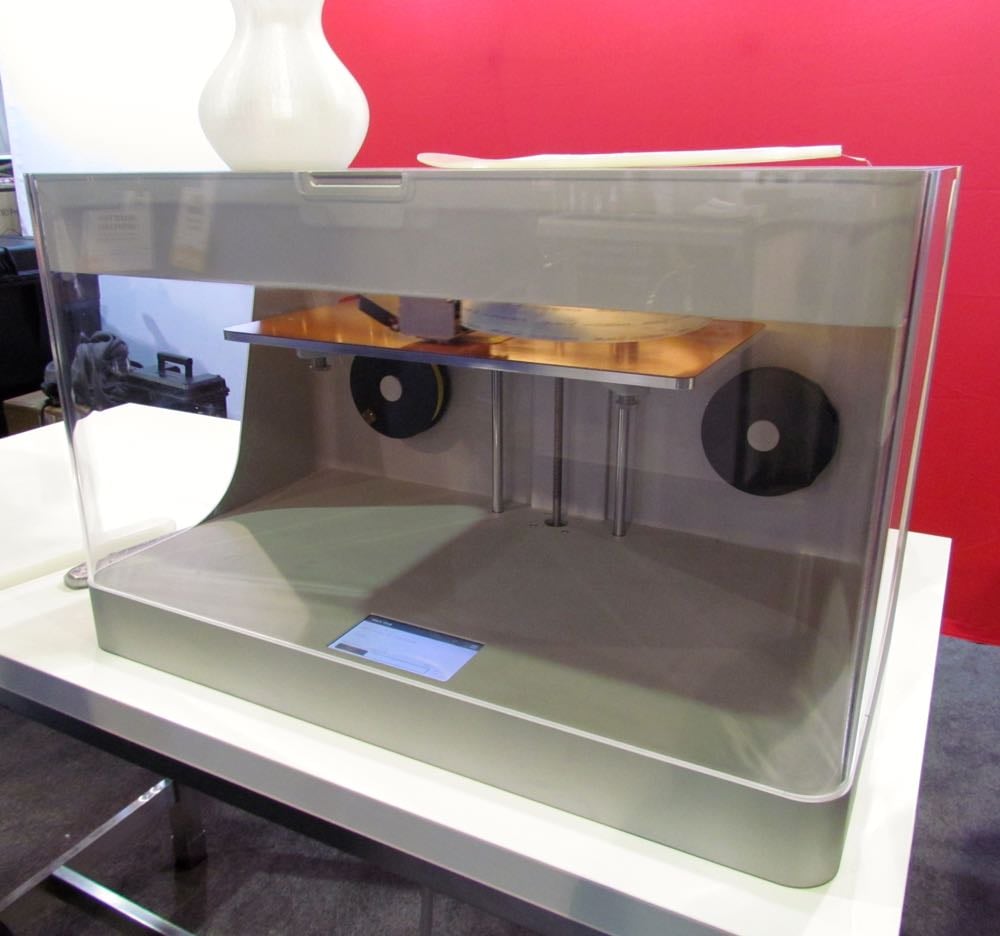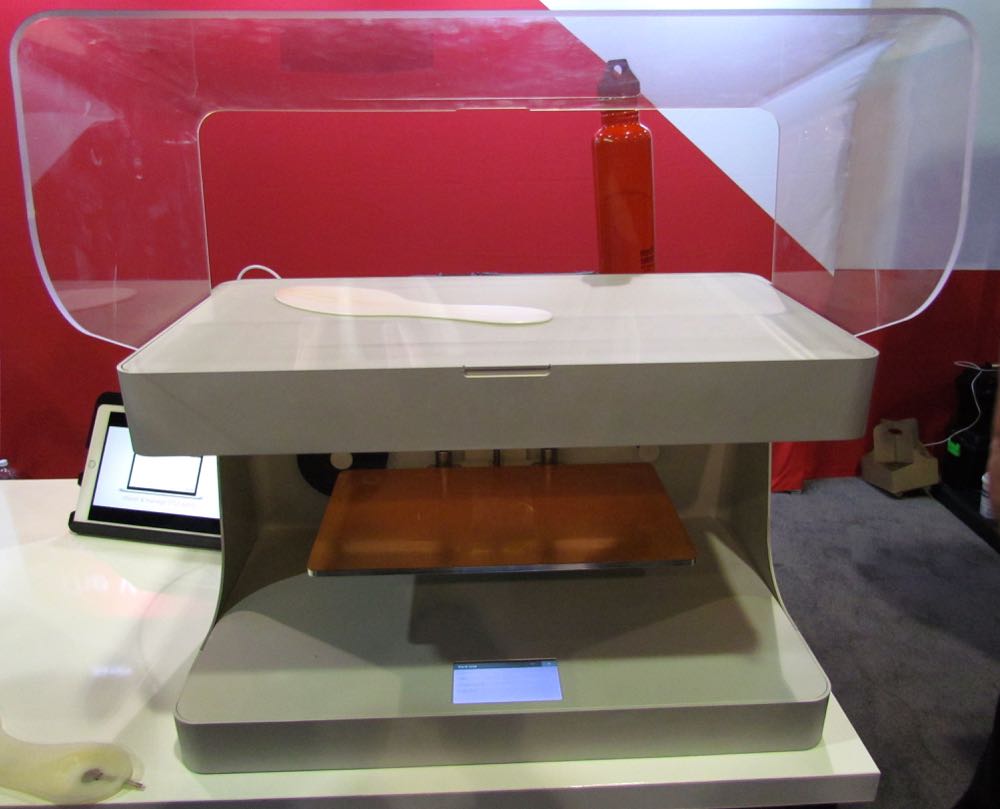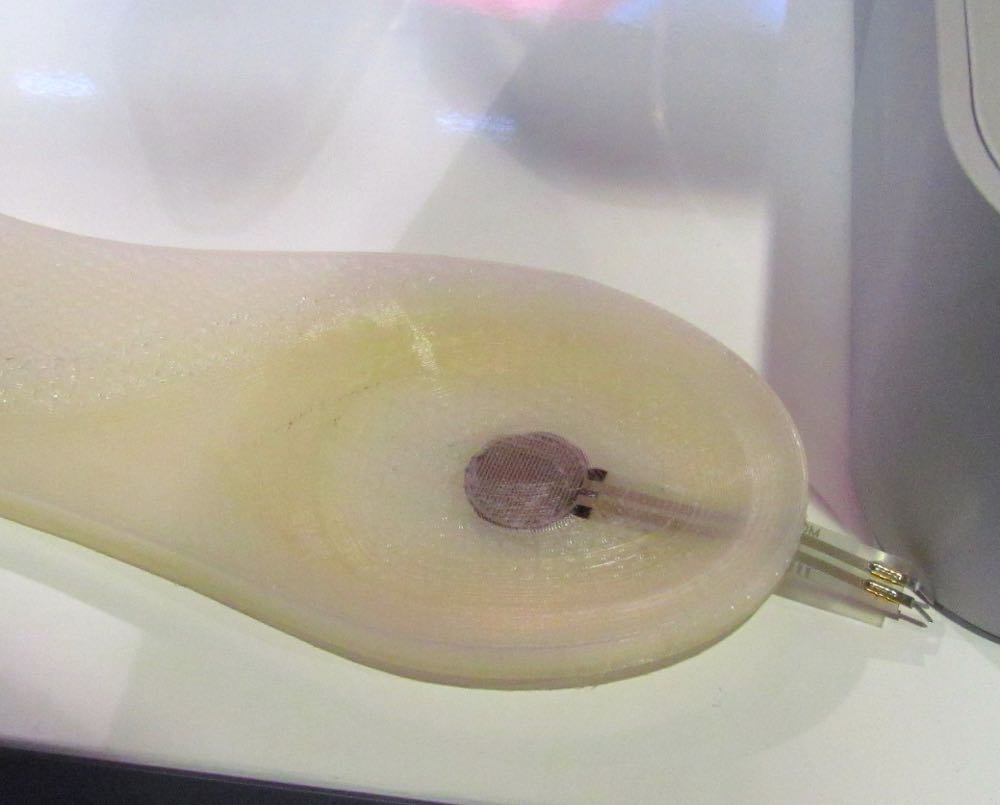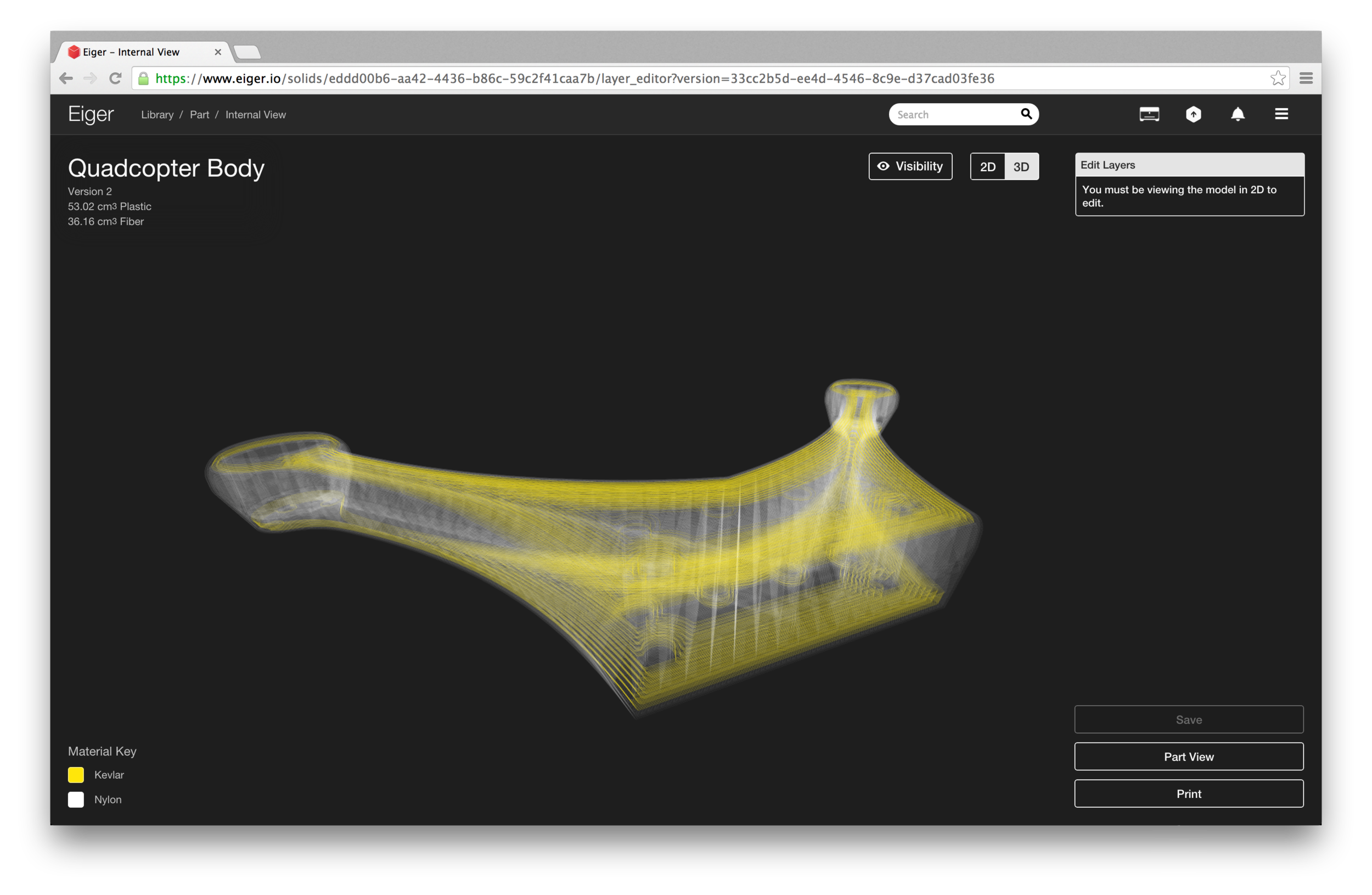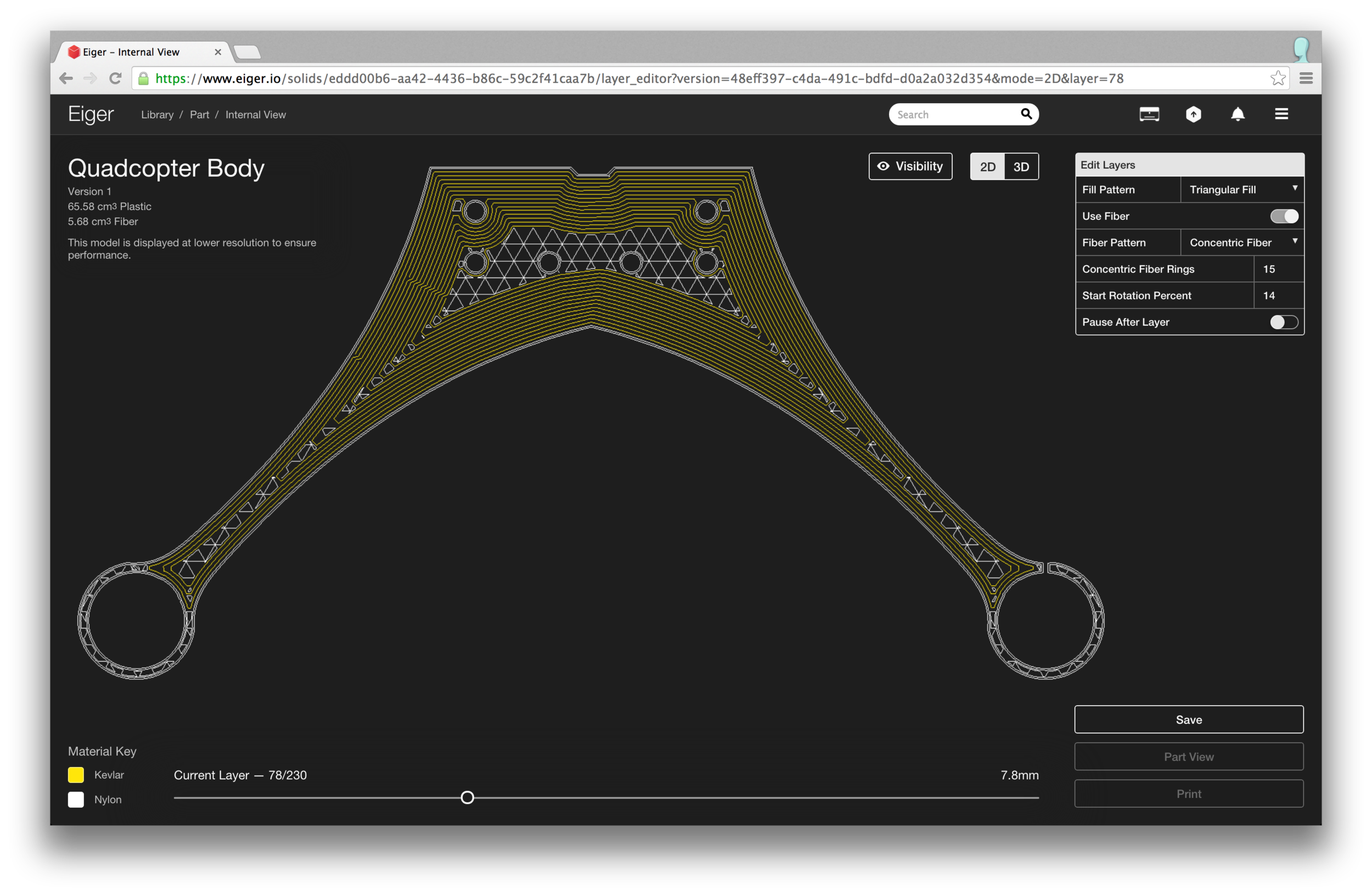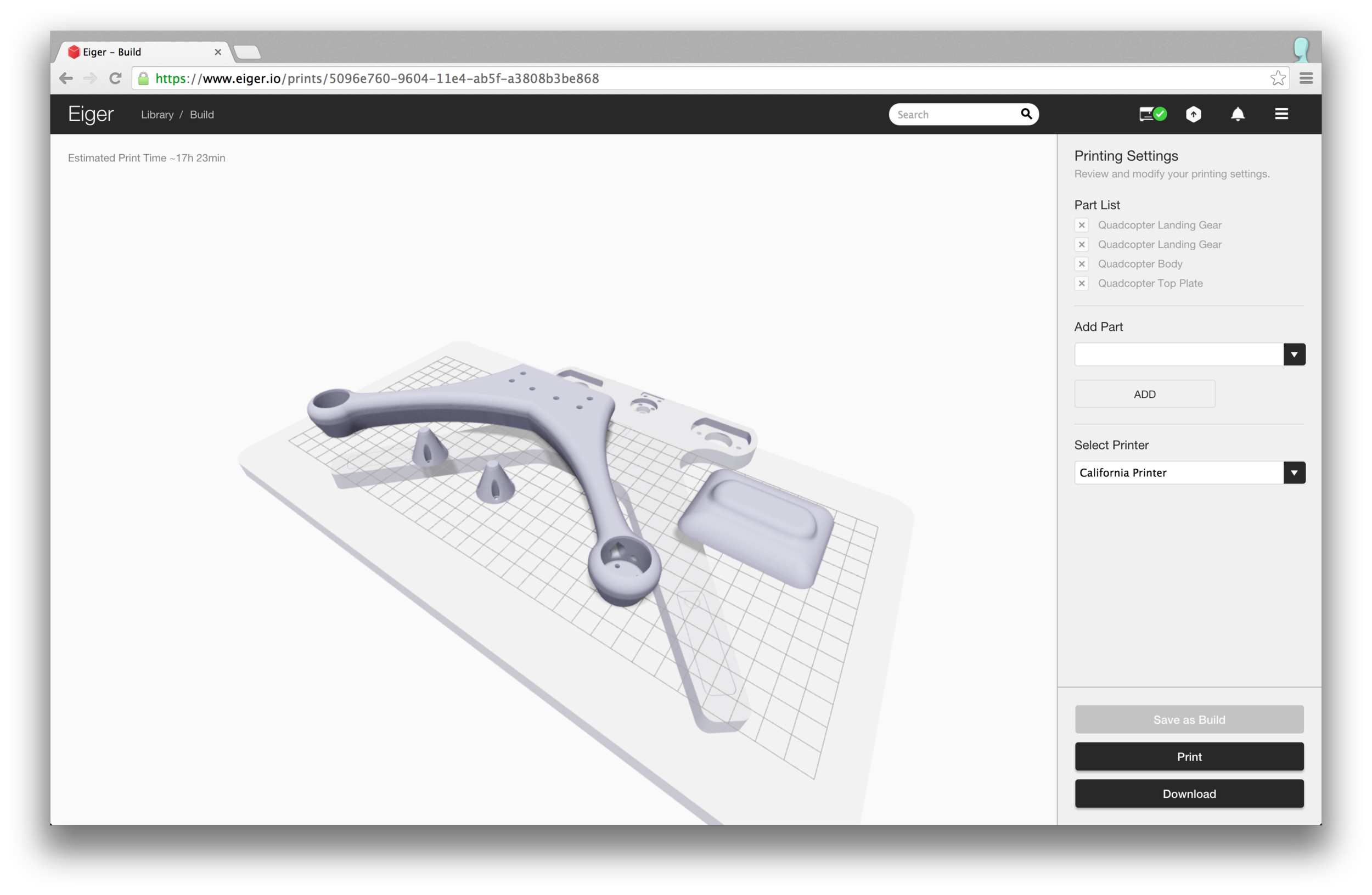Our first look at the Mark One carbon fiber 3D printer was many month ago. Since then, they’ve improved it significantly.
But first some background: Markforg3d’s key product is the Mark One, notable as it can embed continuous strand carbon fiber within nylon 3D prints. While nylon objects are already pretty strong, they can be made much stronger with a dose of carefully applied carbon fiber.
What’s changed? First, they now offer two new embeddable materials aside from the original carbon fiber: kevlar and fiberglass. These two new materials offer different properties, thus expanding the potential uses of the Mark One.
We asked about conductive materials, as certain other companies now offer such, but Markforg3d would say only, “no comment”. Take that for what it may imply. Meanwhile, they successfully embedded a working circuit into a shoe insole here. Clearly they’re interested in this capability.
While their hardware is impressive – both in technical capability and style, we were more impressed with their software. Firstly, they must have specialized software to handle their unique requirement for intelligently embedding alternate materials within an existing 3D model. But they’ve taken it far beyond that.
Their software provides an incredibly slick user interface to enable easy management of 3D models. You can apply different materials to different portions of the print, as you can see in this “X-Ray” view of a half-quadcopter body; the yellow areas indicate kevlar, with the rest being nylon. Now that’s going to be a very strong copter! The software includes many features to add different materials internally to a model.
Markforg3D realizes their equipment will be primarily used by engineers prototyping mechanical parts, and they’ve taken steps to make their software much more usable in those development scenarios.
The software is cloud-based, meaning it is always up to date and available. Yes, it performs all the usual orientation, print properties and sizing that you’d find in other print controller software, but it does it in a beautiful way. You can easily select for multiple copies, send prints to different authorized printers WiFi/Ethernet/USB-attached to the network. As the printer is network-operated, you’ll receive full notifications regarding print progress. Too hard to figure out? They have “wizard mode”, too.
One very interesting feature is the ability to manage libraries of components. The cloud software enables change control mechanisms, so that you can store versions of individual components and recall them when necessary. It’s also possible to “fork” parts into new “branches” of development. We haven’t seen this capability directly attached to a 3D printer before.
The company has been in production since last fall, and had been taking orders since February 2014. Their first shipments occurred in September 2014. Most customers apparently opt for the “development kit” for USD$8,800, which provides a full set of materials for experimentation, while the bare machine is priced at USD$5,500.
For now the company is very interested in finding additional resellers, both in North America and beyond.
Their goal: simply enable the production of “better parts”.
Via Markforg3d

